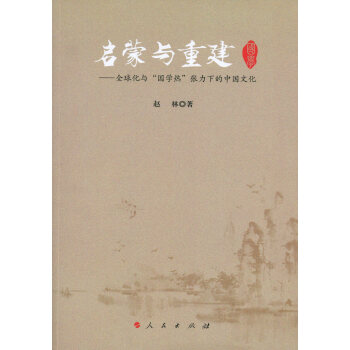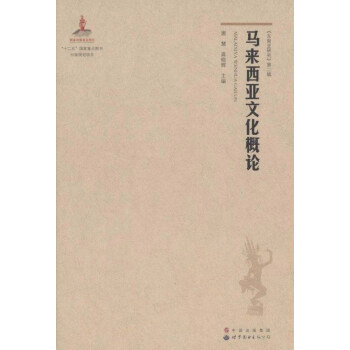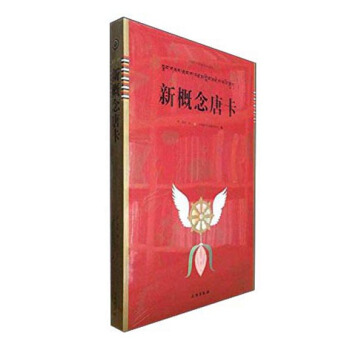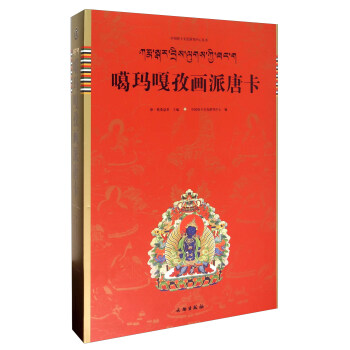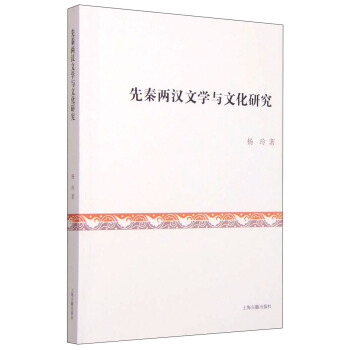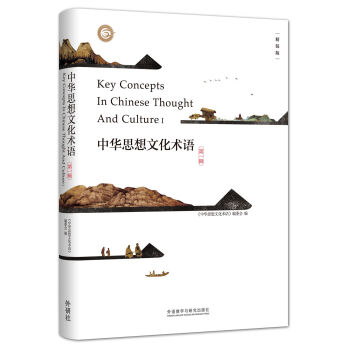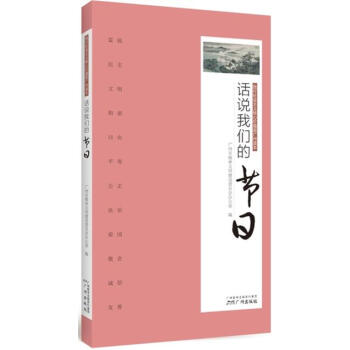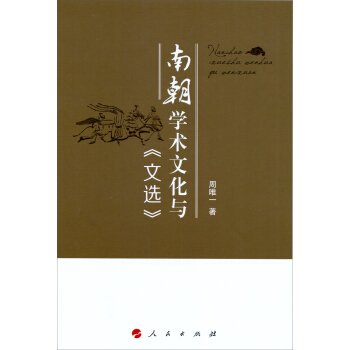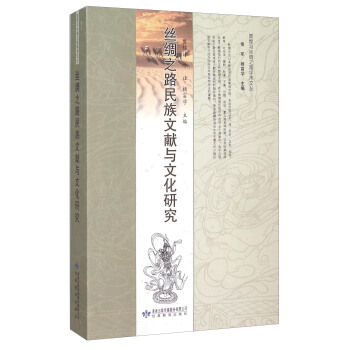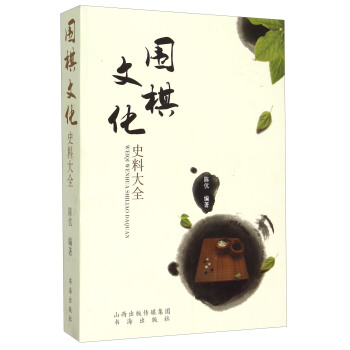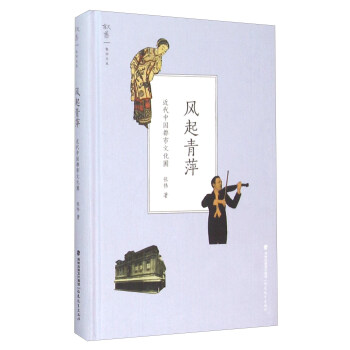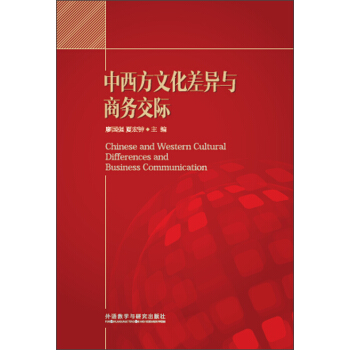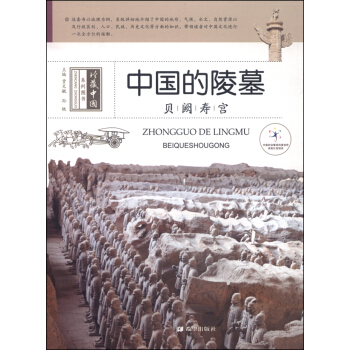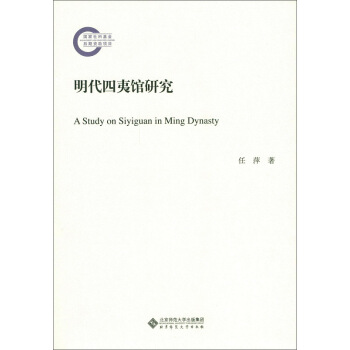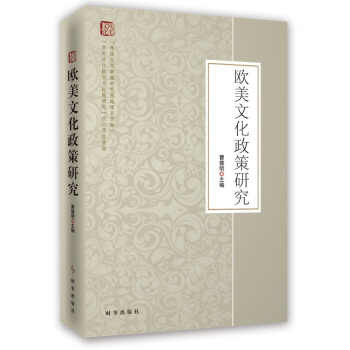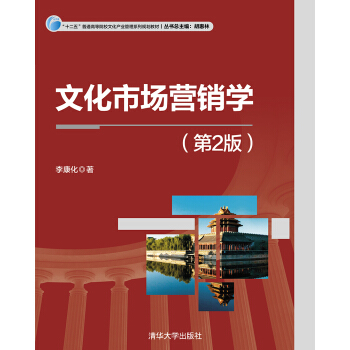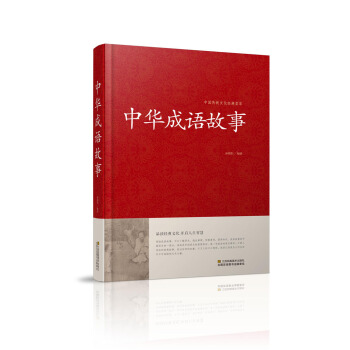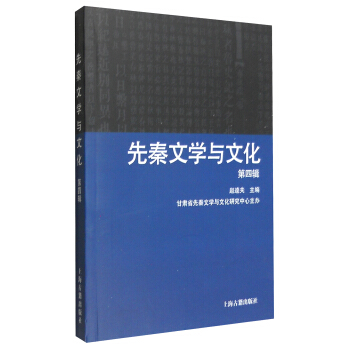![中国文化系列丛书:中国文化·服饰(英文版) [Chinese Culture: Clothing]](https://pic.tinynews.org/11734576/55aa0f1cN4ab4e983.jpg)

具体描述
编辑推荐
几乎从服饰出现的那天起,人们的社会身份、生活习俗、审美情趣,以及种种文化观念就已融入其中了。服饰的面貌是社会历史风貌直观、写实的反映,从这个意义上说,服饰的历史也是一部生动的文明发展史。
Almost from the day when clothes emerged, people’s social status, living customs, aesthetical tastes and various cultural concepts were integrated into them. Clothes are the most straightforward and realistic reflection of social and historical scenes. In this sense, the clothing history is also a vivid history of the development of civilization.
内容简介
丛书从源远流长的中国文化中,选取有代表性的10个领域和专题进行介绍,包括哲学思想、文学、艺术、汉字、节日、饮食、工艺、服饰、建筑、医药等10分册。通过流畅、轻松的文字和精美的图片,使海内外广大读者在愉快的阅读体验中,领略中国文化的丰富多彩、博大精深。整个系列中的每种图书既各自独立,综合起来又在精心搭就的框架下,勾勒出中国文化的总体面貌。
中国人习惯把日常生活概括为“衣食住行”,服饰排在了首位,可见它在生活中的重要位置。在这个历史悠久的衣冠大国,从古至今,伴随着民族间的相互融合和东西方文化的交流,服饰的样式和穿着习俗始终在不断演变。
The “Chinese Culture” book series includes ten books on philosophical thoughts, literature, art, Chinese characters, festivals, foods and drinks, crafts, clothes, architecture and medicine. Each book introduces the history of a field or theme and the same origin of Chinese culture reflected by it, pursues its existence and manifestation in Chinese people’s life today, tells those “unknown stories” through smooth and relaxing words and exquisite pictures, reveals Chinese people’s thinking habits, behavioral modes, traditional concepts and social life, and helps readers understand “what Chinese people are like and what their thinking modes and living customs are.”
In the Chinese way of describing the necessities of life, clothing ranks at the top of “clothing, food, shelter and means of travel”, which shows its important place in life. In this country with a long history of garments and ornaments, with integration of ethnic groups and cultural exchange between the East and West, clothing styles and customs have been evolving since ancient times.
作者简介
华梅,天津师范大学教授,华梅服饰文化学研究所所长,原美术与设计学院院长。1983年起从事中国服装史教学,1994年创建服饰文化学新学科。至今出版专著56部,代表著作有《人类服饰文化学》《服饰与中国文化》《中国服装史》《西方服装史》《服装美学》等。
内页插图
目录
Contents
Preface: Beautiful Chinese Clothes
From Barbarism to Monarchy
From Ancient One-piece Dresses to Casual Garments and Gowns
Incredible Silk
Imperial Clothes and Culture
Reforming Military Clothing – King Wuling of Zhao
Loose Clothes and Broad Bands
Beautiful Tang Suits
Elegant and Comfortable Casual Clothes
Official Robes
End of Monarchy – Western Clothes Come to the East
Cutting Plaits and Releasing Feet
The Coexistence of Chinese and Western-style Clothes
Improved Cheongsams Combining Chinese and Western Features
Modern Clothes
Workers’ Clothes and Farmers’ Clothes
Military Dress
Bell-bottoms and Sunglasses
Jeans and Denim
精彩书摘
Official Robes
Ancient China was a feudal society with a rigid hierarchy. This hierarchy was clearly reflected in its clothing. Because ruling regimes needed stability and stability in turn required order, such order was manifested in clothes, especially officials’ clothes. In ancient China, everybody had to abide by clothing rules, which not only involved daily customs, but also constituted a part of the state’s social institutions. All of the dynasties had rules and orders that stipulated the textures, colors, patterns and styles of clothes in detail. Imperial kinsmen’s clothes, civil and military officials’ clothes and ordinary people’s clothes were all strictly separated, and people who violated the rules were punished. This practice of standardizing and limiting the clothes and headwear of various social classes, officials, and ordinary people was obviously intended to maintain the ruling order but also enhanced the culture of Chinese clothes.
A common image of ancient Chinese official robes is of county officials wearing black gauze caps with two wings on both sides like two copper coins, a jade belt and black boots with white soles. But, in fact, this is a comic image of Chinese officials popularized during the Song and Ming dynasties. Ancient Chinese officials’ clothes were quite diverse and different dynasties had different rules, and sometimes even changed the rules several times within the same dynasty. Changing the color of officials’ clothes was usually related to the state’s stability and politics. Official robes often epitomized Chinese people’s world view and understanding of political power, and this should not be overlooked when considering clothing of this type.
Official robes had caps, which showed authority. During the Han Dynasty most civil officials wore the “virtue cap” with a turban below it. Military officials wore a large military cap, supplemented with a flat turban. The turban was a kind of kerchief worn by men of all ranks in the Qin and Han dynasties. However, officials’ turbans were worn below their caps, while ordinary people wore only turbans.
In the Wei Dynasty, Jin Dynasty and the Southern and Northern Dynasties, a translucent stiff cap was made by applying lacquer to loose and light black gauze to make it erect, and to make the top vaguely visible.
In the Tang Dynasty, both officials and ordinary people wore scarves but they went through different styles and stages of development. The early scarf was a low kerchief wrapped on the head. Later, a turban made of phoenix tree wood, silk, vines, grass, and leather was added under the scarf like a fake chignon, giving a fixed scarf shape. From the middle period of the Tang Dynasty, caps with fixed shapes were formed gradually, and they were still called scarves. In the Zhenguan Period, caps with low and flat tops were called the “flat and small style” and were very popular; during the reign of Emperor Gaozong and the reign of Wu Zetian, the top of the scarf was lifted and separated into two petals called the “imperial Wu family style”; during the reign of Emperor Xuanzong, the cap sloped down to the forehead and was called the “Kaiyuan inner style.” The scarf’s two corners, also called feet, at first hung naturally to the neck or below the shoulders like bands. Later, they were gradually shortened, bent upwards, inserted into a knot behind the head, and called the “soft-corner” scarf. After the middle period of the Tang Dynasty scarf corners were round or broad like hard wings curling slightly upwards, and the middle parts were like silk strings. Because they could move, or bounce, these scarf corners were called hard corners or hard feet. It is said that this scarf style became popular because Emperor Wu of the Northern Zhou Dynasty often wore it.
In the Song Dynasty, officials’ scarves extended to the left and right. It is said that they were long so that officials were prevented from whispering to each other when they stood in court.
In the Tang, Song and Ming dynasties, China’s feudal ruling system was at its most sophisticated and in this period officials’ caps changed from the scarves of the Tang and Song dynasties to the black gauze caps of the Ming Dynasty. The style did not change much: the original temporary wrapping style changed into the fixed cap style. This was the point at which the black gauze cap became a symbol associated with officials.
Wearing a scarf or black gauze cap, a round-collared robe (Tang), a round-collared gown (Song) or a coiled-collar robe (Ming), a jade waistband, and black leather boots became the typical image of ancient Chinese officials’ clothes.
The official robes of these three dynasties did not change much in style, and official ranks were related to the color of the clothing. For example, in the fourth year of the Zhenguan Period of the Tang Dynasty (630) and the first year of the Shangyuan Period (674), two decrees made stipulations about clothing colors and ornaments. The second decree was more detailed: “Level-3 and higher civil and military officials’ clothes are purple with 13 ornaments on the gold and jade band; Level-4 officials’ clothes are deep red with 11 ornaments on the gold band; Level-5 officials’ clothes are light red with 10 ornaments on the gold band; Level-6 officials’ clothes are deep green with 9 ornaments on the silver band; Level-7 officials’ clothes are light green with 9 ornaments on the silver band; Level-8 officials’ clothes are deep blue with 9 ornaments on the chalcopyrite band; Level-9 officials’ clothes are light blue with 9 ornaments on the chalcopyrite band.” The Study of the Music of the Tang Dynasty says, “The colors of Tang officials’ clothes depend on their official ranks.” These rules regarding clothing colors lasted until China’s last feudal dynasty – the Qing Dynasty – exited the stage of history, with only minor adjustments throughout its history. During the Ming Dynasty, the rules were at their most detailed, as can be seen in the following table.
……
前言/序言
Preface: Beautiful Chinese Clothes
Chinese clothing can be traced back to the primitive society of the late Paleolithic Period. Archaeologists have found that 20,000 years ago primitive people who lived near modern-day Zhoukoudian, Beijing, wore ornaments. The white small stone beads, yellowish green cobbles, animal teeth, blood clams and fish bones with furrows unearthed at Zhoukoudian are exquisitely pierced, and traces of hematite powder remain on hole walls. According to the places where they have been found, experts think that these items were necklaces. These people wore ornaments not just for decoration but also to ward off evil spirits and as part of prayer rituals. Long round openings still remain on unearthed bone needles, which demonstrate that ancient people of this period could sew animal hide with needles.
In Qinghai Province, in the west of China, painted pottery basins made more than 5,000 years ago have been unearthed. The patterns on these pottery basins look like dancers doing a hunting dance. The dancers wear plaited ornaments on their heads, tail ornaments hang around their waists, and some wear round skirts. A painted pottery bottle unearthed in Gansu also attracts the attention – it is painted to resemble a girl, with short hair on the forehead above the eyebrows, shoulder-length hair at the back of the head, clearly discernable facial features, and continuous patterns below the neck consisting of three layers of oblique lines, arcs, and triangles. It is thought that these patterns depict clothing.
Chinese clothing and head gear was formalized during the Western Zhou Dynasty (1046–771 BC). The Zhou Dynasty established official positions such as the “clothes minister,” “inner clothes minister” and “jade official”, responsible for the clothes and jade ornaments of the emperor and empress. There were different clothing rules for the emperor and for ordinary people. From the Han Dynasty (206 BC–220 AD) onwards these rules were recorded in official history books such as Records of Carriages and Clothing.
During the Tang Dynasty (618–907) China was powerful, society was more open, and clothes were beautiful. Fashions changed more frequently and women wearing low-neck short gowns or men wearing narrow-sleeved dresses became a symbol of the greater social tolerance of the period. The Tang Dynasty was the most splendid era of Chinese clothing.
After 1840, China became a modern society as the number of trading ports increased and more cosmopolitan cities, such as Shanghai, saw the integration of Chinese and Western cultures. Driven by European and American fashion trends, traditional Chinese clothes began to change.
In the first half of the 20th century, Chinese clothes underwent a period of integration with Western clothing and this fusion can be seen in cheongsams, long gowns, tunic suits, school uniforms, Western-style clothes, hats, silk stockings, and high-heeled shoes. After the founding of the People’s Republic of China in 1949, clothes that elevated the status of laborers, such as workers’ clothes and farmers’ clothes emerged. In the 1980s, after China began to reform and open up to the rest of the world, jackets, bell-bottomed pants, jeans, miniskirts, bikinis, professional suits, punk clothes, T-shirts, etc. were embraced by the Chinese people. Clothes, like people, have been witness to changing times.
China is a multinational country (with 56 different ethnic groups) and clothing styles and customs are constantly changing – like flowers in a garden, always providing color, interest and beauty.
用户评价
购买这本书纯属偶然,当时是被它典雅的书名吸引,并没有预设太高的期望。然而,翻开之后,我便深深地被其内容所吸引,仿佛置身于一个穿越时空的文化长廊。这本书的独特之处在于,它不仅仅是罗列了中国各个历史时期、各个地域的服饰样式,更重要的是,它将服饰置于一个宏大的文化背景下进行解读。我特别喜欢书中对“衣冠礼仪”的论述。它详细阐述了不同场合、不同身份的人在着装上所应遵循的规矩,以及这些规矩如何维系着社会的和谐与稳定。例如,在祭祀场合,服饰的庄重肃穆,不仅仅是对神明的敬畏,更是对祖先的追思。在婚礼喜庆的日子,色彩鲜艳、寓意吉祥的服饰,则寄托了人们对新人幸福美满生活的祝福。我了解到,中国古代的服饰不仅仅是物质层面的衣物,更是精神层面的载体,它承载着人们的身份、地位、情感、以及对世界的认知。书中对不同民族服饰的介绍也让我印象深刻,比如苗族的银饰,藏族的藏袍,维吾尔族的花帽,这些都展现了中华民族多元文化的魅力,以及各民族在长期的历史发展中,如何通过服饰来表达自己的独特文化身份。
评分这本书的内容深度和广度都远远超出了我的想象。起初,我只是想了解一下中国古代服装的款式和特点,但没想到,它会带我进行一场跨越千年的文化之旅。书中对“天地人”三者关系的阐释,以及这种关系如何在服饰中得到体现,让我大为惊叹。我了解到,中国古代的服饰设计,往往追求与自然的和谐统一。例如,汉代服饰的宽袖垂袍,以及对大地色系的偏爱,都体现了人们对“天人合一”的追求。书中的例子非常具体,比如,详细介绍了不同朝代官服上所使用的补子图案,以及这些图案所代表的品级和象征意义。这些补子,如鸡、雉、豹、虎等,不仅仅是装饰,更是官员身份的直接体现,也反映了中国古代社会严格的等级制度。更让我着迷的是,书中对传统服饰工艺的细致描写,如缂丝、云锦、苏绣等,这些精湛的技艺,不仅仅是手工的劳作,更是世代相传的文化传承。每一种工艺背后,都凝聚着匠人的智慧和汗水,以及对美的极致追求。我仿佛能看到古代工匠们辛勤劳作的场景,以及他们如何将对生活的热爱和对自然的敬畏,融入到每一件服饰之中。
评分我对中国文化一直保持着浓厚的兴趣,尤其是其历史悠久的服饰文化。《中国文化·服饰》(英文版)这本书,可以说是我近年来读到的关于中国服饰最权威、最深入的作品之一。它最让我惊叹的地方,在于作者能够将非常学术化的理论,以一种读者容易理解的方式呈现出来。书中对“礼”在中国服饰中的作用进行了详细的阐述。我一直以为“礼”只是停留在抽象的道德层面,但这本书告诉我,它更是体现在物质文化之中,尤其是服饰。比如,在古代,不同场合的着装规范,就是“礼”最直观的体现。丧服的颜色和款式,祭服的庄重典雅,朝服的威严气派,都严格遵循着“礼”的要求。这不仅仅是为了区分身份,更是为了维护社会秩序和人伦关系。书中对“衣冠正人”的解读,让我深刻理解了服饰在中国人社会心理中的重要性。它不仅仅是外在的装扮,更是内在品德的反映。一件得体的服饰,能够传达出穿着者的身份、修养,甚至是人格魅力。
评分我一直对不同文化背景下的生活方式充满好奇,尤其是东亚文化,而中国无疑是其中一个极其迷人的部分。这本书《中国文化·服饰》英文版的出现,为我提供了一个绝佳的视角去深入理解中国。与其说它是一本介绍服饰的书,不如说它是一本关于“穿在身上的中国哲学”的读物。我尤其印象深刻的是书中关于“阴阳五行”在中国服饰中的体现。它不仅仅是简单的色彩搭配,而是贯穿于面料选择、裁剪方式、甚至图案纹样之中。例如,书中提到,传统服饰的交领右衽设计,以及宽松的袍服,是如何呼应了“天圆地方”的宇宙观,以及“道法自然”的哲学思想。它并非现代人理解的,为了追求所谓的“东方韵味”而刻意为之,而是根植于中国古代天人合一的智慧。我注意到书中花了相当大的篇幅去解读刺绣和印染工艺中蕴含的象征意义。那些看似精美的花鸟鱼虫、祥云瑞兽,并非简单的装饰,而是蕴含着对美好生活、家族兴旺、甚至是个人品德的祈愿。比如,蝙蝠象征“福”,牡丹象征“富贵”,这些都与中国传统文化中的吉祥寓意息息相关。读到这里,我才真正明白,为何中国人如此重视这些细节,因为它们连接着过去、现在和未来,连接着个体与宇宙。
评分阅读《中国文化·服饰》(英文版)的过程,就像是在品味一壶陈年的佳酿,越品越有味道,越品越能感受到其中蕴含的醇厚底蕴。这本书最打动我的,是它对于“服饰作为文化符号”的深刻洞察。我一直觉得,文化是抽象的,但服饰却是具象的,能够将抽象的文化理念,通过物质的形式展现出来。书中对“五色观”在服饰中的体现,让我对色彩的理解有了全新的认识。不仅仅是简单的颜色搭配,而是上升到了宇宙观、哲学观的层面。例如,书中解释了为何在古代,黑色常常被用来象征北方和水德,而红色则象征南方和火德。这些色彩的运用,都与中国古代的阴阳五行学说息息相关。我尤其喜欢书中关于“丝绸之路”对中国服饰影响的论述。它让我看到,中国的服饰文化并非是封闭的,而是与其他文明进行着广泛的交流与融合,这种开放性和包容性,也正是中华文明源远流长的重要原因。
评分我一直认为,了解一个国家的文化,最直观的方式就是从它的服饰入手,因为服饰最直接地反映了一个民族的审美情趣、社会习俗和生活方式。而《中国文化·服饰》(英文版)这本书,恰恰在这方面做到了极致。它不仅仅是向我展示了中国历史上的各种精美服饰,更重要的是,它通过服饰,向我讲述了中国人的精神世界。书中对“隐喻”在服饰中的运用进行了深入的探讨,这让我耳目一新。我以前只知道衣服的颜色和款式很重要,但从未想过,那些复杂的纹样,如龙、凤、祥云、花卉,竟然都蕴含着丰富的象征意义。比如,书中解释了龙纹在中国古代为何是帝王的象征,而凤纹又是皇后的象征,这背后反映了权力结构和等级制度。同时,书中也提到了,一些看似普通的植物纹样,如梅兰竹菊,其实也承载着君子高洁的品格和隐逸的情怀。这种将抽象的哲学理念具象化到服饰上的方式,让我对中国文化的博大精深有了更深刻的认识。此外,书中对不同时代服饰演变的梳理,也让我看到了中国社会变迁的轨迹。从魏晋南北朝的“褒衣博带”,到唐朝的雍容华贵,再到明清的严谨规整,每一段时期的服饰都仿佛是一面镜子,折射出当时的社会风貌、经济发展和文化思潮。
评分这本书的阅读体验,让我仿佛经历了一场穿越时空的奇妙旅程。它不仅仅是关于中国服饰的书,更是关于中国人的生活方式、审美情趣、以及哲学思想的书。最让我印象深刻的是,书中对“对称美”和“和谐感”在服饰设计中的体现。我发现,许多中国传统服饰的剪裁方式,都追求一种平衡与和谐,例如,宽松的袍服,以及对线条的流畅运用。这种设计理念,也与中国传统哲学中的“中庸之道”不谋而合。书中还详细介绍了不同朝代女性服饰的演变,从汉代的朴素大方,到唐代的雍容华贵,再到宋代的婉约内敛,每一段时期的女性服饰,都反映了当时社会对女性的审美期待和地位的变化。这让我看到,服饰不仅仅是女性的装扮,更是社会文化变迁的晴雨表。
评分我一直认为,服装不仅仅是蔽体保暖的工具,更是文化和身份的象征。《中国文化·服饰》(英文版)这本书,更是将这一理念发挥到了极致。它不仅仅是介绍了中国各个历史时期、各个民族的服饰,更重要的是,它深入挖掘了服饰背后所蕴含的文化意义。书中对“阴阳”在中国服饰中的体现,让我感到无比新奇。我了解到,许多服饰的设计,如交领右衽,以及对宽松剪裁的偏爱,都与中国古代的阴阳哲学思想息息相关。这种对内在精神的追求,与西方服饰文化中对身体曲线的强调形成了鲜明的对比,也让我对中国文化的独特之处有了更深刻的认识。此外,书中对不同场合、不同身份的人在服饰上的差异进行了详细的阐述,让我深刻理解了中国古代社会严格的等级制度,以及“衣冠”在中国社会结构中的重要作用。
评分这本书简直让我大开眼界,虽然书名是《中国文化·服饰》,但它所揭示的远不止是几件漂漂亮亮的衣服。我原本以为会是一本图文并茂的介绍古代皇室服饰、民国旗袍或是现代汉服演变的简单读物。然而,当我翻开第一页,就被作者深厚的文化底蕴所震撼。书中巧妙地将服饰与哲学思想、社会制度、民俗风情、甚至艺术审美紧密地联系在一起。比如,在探讨古代官服时,书中不仅仅描述了不同等级的官员在祭祀、朝会时所穿的礼服形制、颜色、纹饰的细微差别,更深入地分析了这些“看得见的等级”是如何体现了儒家礼制中的“君臣父子”秩序,以及“以衣冠治天下”的政治理念。我从未想过,一件龙袍、一顶官帽,背后承载着如此丰富且深刻的文化内涵。书中对服饰的色彩选择也进行了细致的剖析,不仅仅是简单的五行相生相克,更是上升到了宇宙观、道德观的层面。比如,黄色作为帝王的专属色彩,其背后蕴含的“中央土德”的象征意义,以及对天下万物的统摄之意,都通过服饰的颜色得到了具象化的表达。甚至在谈及平民百姓的服饰时,也并非简单罗列,而是从劳动人民的生活习惯、信仰习俗、以及对美好生活的朴素追求等角度出发,勾勒出一幅幅生动的生活画卷。这本书让我真正理解了“衣食住行”中的“衣”在中国文化中的重要地位,它绝不仅仅是蔽体御寒的功能性物品,而是承载着文化基因、社会价值观、以及个体身份认同的重要载体。
评分这本书的阅读体验是前所未有的,它成功地将我对中国服饰的认知,从一个平面化的描述,提升到了一个多维度、深层次的理解。我原本以为,中国服饰就是旗袍、汉服,但这本书彻底颠覆了我的认知。它让我看到,中国服饰的演变,是与中国的历史、哲学、宗教、艺术、乃至生活方式紧密相连的。书中对“象征主义”在服饰中的运用,让我感到无比新奇。我了解到,许多看似寻常的图案,如莲花、鱼、如意等,都承载着丰富的象征意义,它们不仅仅是装饰,更是人们对美好愿望的寄托。比如,书中解释了为何鱼在中国的传统文化中象征着“年年有余”,而莲花则象征着“纯洁”和“高尚”。这些细节的解读,让我对中国文化有了更细致、更深刻的理解。此外,书中对不同时期、不同地域服饰的对比分析,也展现了中国文化的丰富性和多样性。它让我认识到,中华文明并非是一个单一的文化体,而是由无数个丰富多彩的地域文化共同构成的。
相关图书
本站所有内容均为互联网搜索引擎提供的公开搜索信息,本站不存储任何数据与内容,任何内容与数据均与本站无关,如有需要请联系相关搜索引擎包括但不限于百度,google,bing,sogou 等
© 2025 book.idnshop.cc All Rights Reserved. 静思书屋 版权所有

